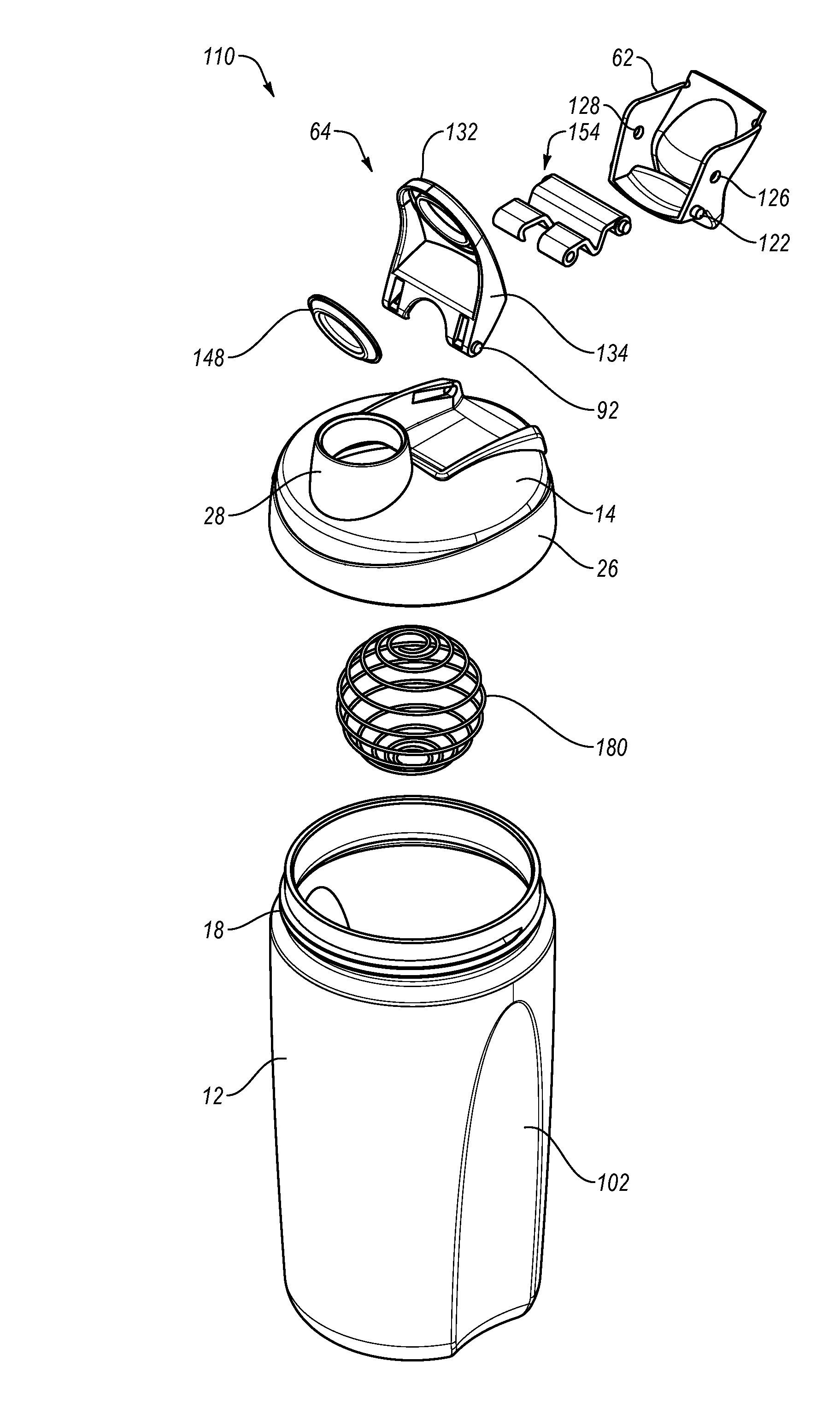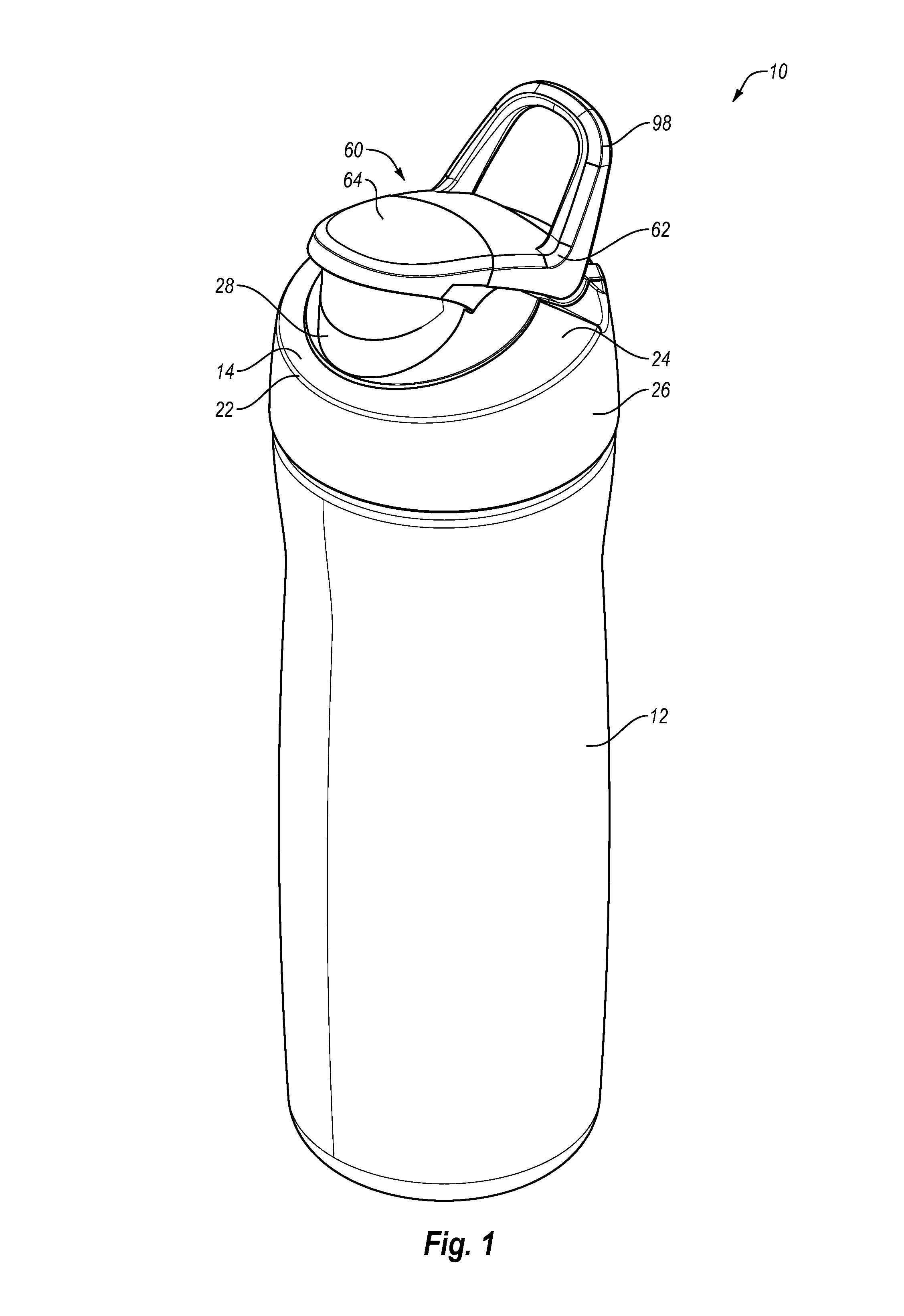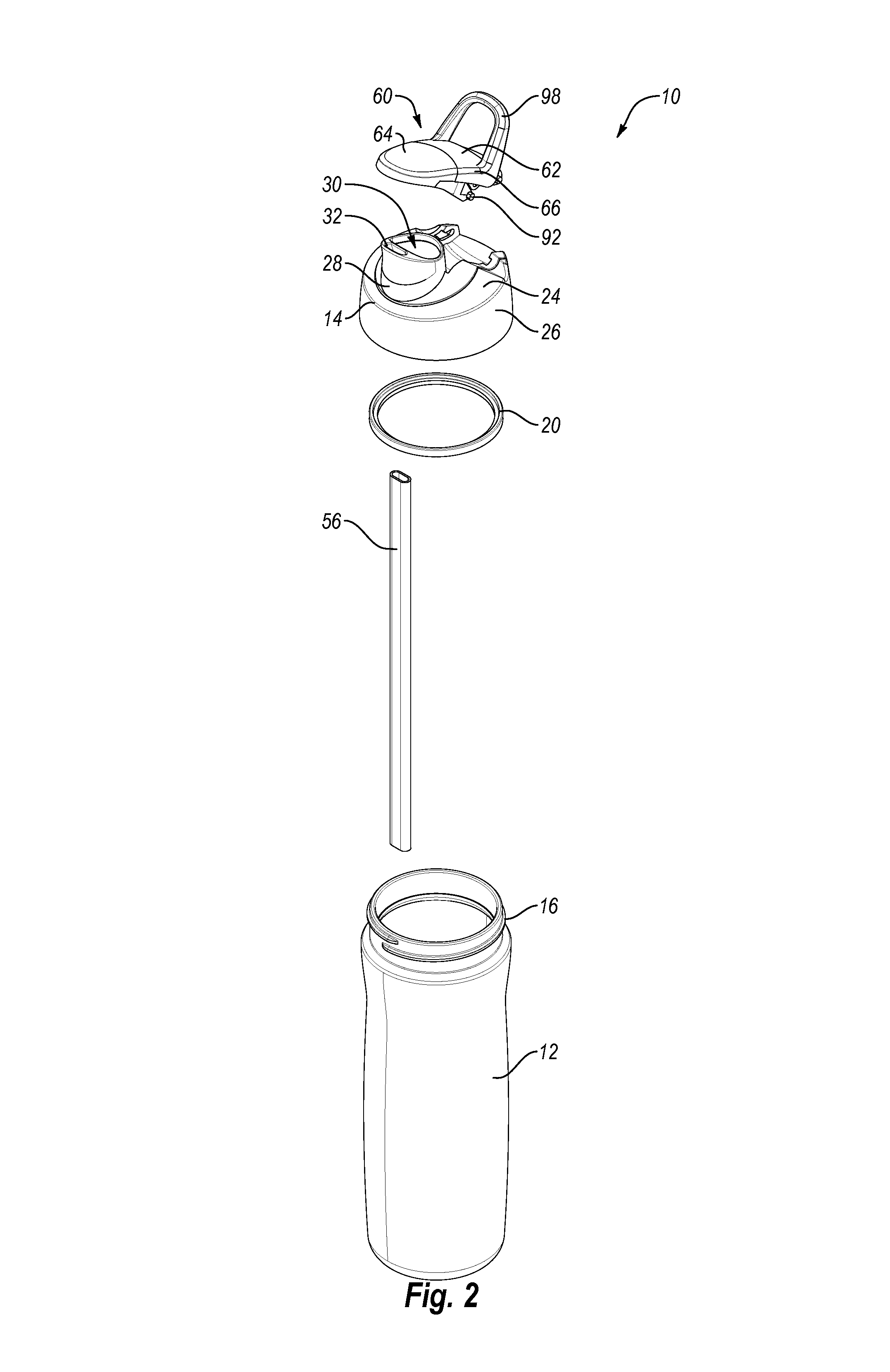Closure for an opening in a lid
a lid and opening technology, applied in the field of lids, can solve the problems of unsuitable use for traditional beverage containers, large effort required to open and close the lid, and the portability is difficult to guarantee,
- Summary
- Abstract
- Description
- Claims
- Application Information
AI Technical Summary
Benefits of technology
Problems solved by technology
Method used
Image
Examples
Embodiment Construction
[0079]The present invention is generally directed towards a lid for a container. The principles of the present invention, however, are not limited to lids for containers. It will be understood that, in light of the present disclosure, the lids and containers disclosed herein may have a variety of shapes, sizes, configurations, and arrangements. It will also be understood that lids and containers may include any suitable number and combination of features, components, aspects, and the like. In addition, while the lids and containers shown in the accompanying figures are illustrated as having particular styles and configurations, it will be appreciated the lids and containers may have any suitable style or configuration. Further, the lids and containers disclosed herein may be successfully used in connection with other types of objects and devices.
[0080]Additionally, to assist in the description of various exemplary embodiments of the lids and containers, words such as top, bottom, fr...
PUM
 Login to View More
Login to View More Abstract
Description
Claims
Application Information
 Login to View More
Login to View More - R&D
- Intellectual Property
- Life Sciences
- Materials
- Tech Scout
- Unparalleled Data Quality
- Higher Quality Content
- 60% Fewer Hallucinations
Browse by: Latest US Patents, China's latest patents, Technical Efficacy Thesaurus, Application Domain, Technology Topic, Popular Technical Reports.
© 2025 PatSnap. All rights reserved.Legal|Privacy policy|Modern Slavery Act Transparency Statement|Sitemap|About US| Contact US: help@patsnap.com



